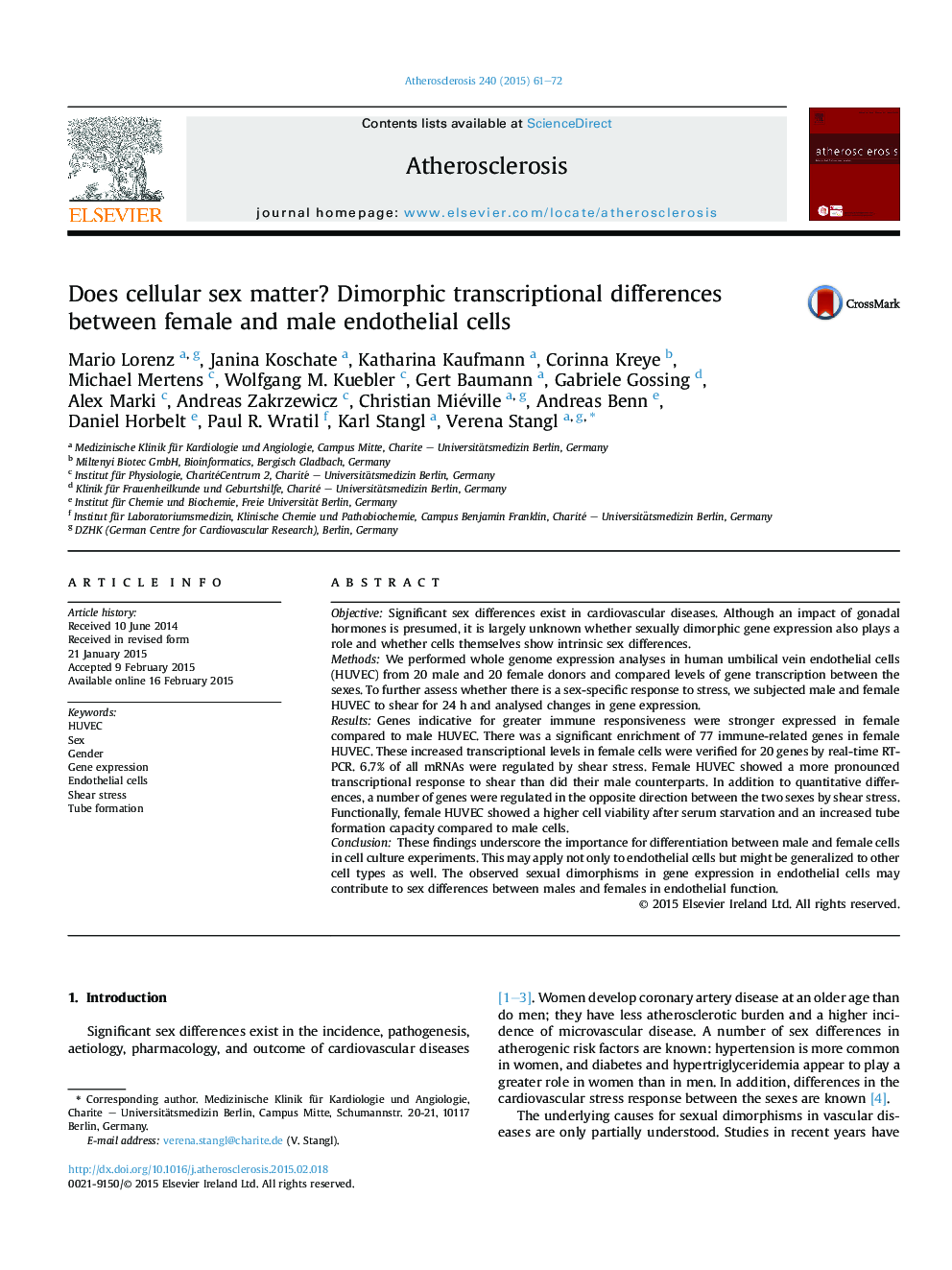| کد مقاله | کد نشریه | سال انتشار | مقاله انگلیسی | نسخه تمام متن |
|---|---|---|---|---|
| 5945154 | 1172349 | 2015 | 12 صفحه PDF | دانلود رایگان |
- Intrinsic sex-specific transcriptional profiles in HUVEC from male and female donors.
- Higher expression of immune-related genes in female compared to male cells.
- Female cells showed a stronger transcriptional response to shear stress.
- Increased tube formation capacity and higher cell viability in female cells.
- Discrimination between female and male cells in basic and applied research important.
ObjectiveSignificant sex differences exist in cardiovascular diseases. Although an impact of gonadal hormones is presumed, it is largely unknown whether sexually dimorphic gene expression also plays a role and whether cells themselves show intrinsic sex differences.MethodsWe performed whole genome expression analyses in human umbilical vein endothelial cells (HUVEC) from 20 male and 20 female donors and compared levels of gene transcription between the sexes. To further assess whether there is a sex-specific response to stress, we subjected male and female HUVEC to shear for 24Â h and analysed changes in gene expression.ResultsGenes indicative for greater immune responsiveness were stronger expressed in female compared to male HUVEC. There was a significant enrichment of 77 immune-related genes in female HUVEC. These increased transcriptional levels in female cells were verified for 20 genes by real-time RT-PCR. 6.7% of all mRNAs were regulated by shear stress. Female HUVEC showed a more pronounced transcriptional response to shear than did their male counterparts. In addition to quantitative differences, a number of genes were regulated in the opposite direction between the two sexes by shear stress. Functionally, female HUVEC showed a higher cell viability after serum starvation and an increased tube formation capacity compared to male cells.ConclusionThese findings underscore the importance for differentiation between male and female cells in cell culture experiments. This may apply not only to endothelial cells but might be generalized to other cell types as well. The observed sexual dimorphisms in gene expression in endothelial cells may contribute to sex differences between males and females in endothelial function.
Journal: Atherosclerosis - Volume 240, Issue 1, May 2015, Pages 61-72
